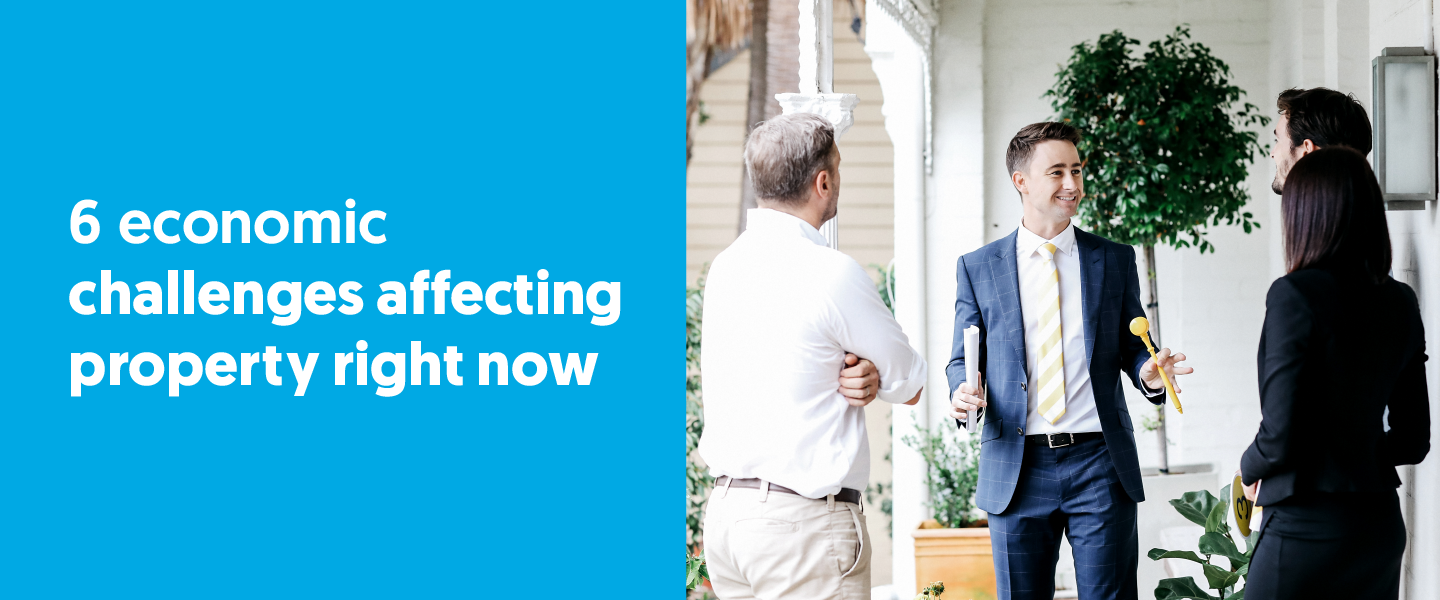
There are a lot of events that have impacted Australia’s economy in 2022 – we’ve all seen the cost of living increasing, plus the uncertainty brought about by the prospect of an interest rate hike or the widespread consequences of war in Europe. However, according to Chief Economist at Ray White, Nerida Conisbee, these are not fazing property buyers. In fact, she said there is still positive buyer sentiment, and sellers could continue to see positive results, especially if considering upgrading your home.
“The market fundamentals right now are still helping those looking to sell,” Nerida said.
“As the economy strengthens and labour markets tighten, the risks around mortgage stress or default should lessen. The number of properties for sale in some regions will also increase, creating more choice for buyers.”
Nerida said Australia is currently facing six serious economic challenges that could impact property.
Inflation & interest rates
The cash rate has been at a record-low 0.1% since November 2020. But in the world of finance, what comes down inevitably goes back up. Nerida said inflationary pressures may force the Reserve Bank to act by August, just before the spring selling season.
“Price growth will continue, but we’re looking at a very different market,” she said. “Prices are slowing in our biggest cities, while rents continue to rise. Smaller cities are now benefiting from affordability and strong economic growth.”
If the cash rate goes up, higher interest rates will quickly follow making mortgages more expensive potentially putting a damper on the spring selling season. Homeowners with variable-rate home loans could face higher repayments.
Record loans
Loan values hit a record high of $33.7 billion in January. Owner-occupiers seeking to climb the property ladder were the biggest contributor to this result, which Nerida said was a surprise. Investor loans grew, too, but funds for first-time buyers dropped 30% showing an increasing challenge for first-timers to get onto the property market.
Australia opens up
A return of international students and migrants will squeeze already-stretched rental markets. Nerida predicts rent hikes in flood-hit areas, like southeast Queensland and northern NSW due to a reduction in the number of properties available to rent, plus increased demand from those who lost homes. However, new tenants will be welcome in many areas of Melbourne and Sydney, which suffered a Covid exodus over the last two years. Foreign investment is also expected to return, promising to boost apartment construction in the medium to long term.
This could be great news for investors who are likely to enjoy lower vacancy rates and potentially higher rents.
Time to vote
Federal elections always cast a shadow of doubt over the country, and this one will be no different. “We still don’t know what policies will be proposed by either party,” Nerida said. “Affordability will be the hot topic. Increasing the supply of housing is the gold standard.” She doesn’t expect investors to be “a target in the same way they were in the last federal election” as the Labor party has dropped its controversial property investment reforms.
Elections tend to act as a brake on the property market so don’t be surprised if you see property sales go into a holding pattern once the election is announced.
The floods
Towns and suburbs in the firing line of natural disasters can take at least five years to bounce back, Nerida said. “Initially, rents typically start to rise as there is a shortage of homes.” She said the year after the disaster, far fewer properties go on the market and recovery is slow. She added, “within five years, provided the natural disaster hasn’t re-occurred, house price growth typically follows the rest of the market.”
Expect to see property prices ease in flood-affected areas in the short term while investors whose properties have not been inundated are likely to be able to command higher rents.
Rising costs
Supply chain problems, labour shortages and rising timber prices have all become major contributors to Australia’s rising inflation rate, currently at 3.5%. This situation may worsen because of the rebuilding required after the floods and new projects like the 2032 Brisbane Olympics Games.
Expect the rising costs of building materials and their lack of availability to start to flow onto both the costs of new builds and renovations.
